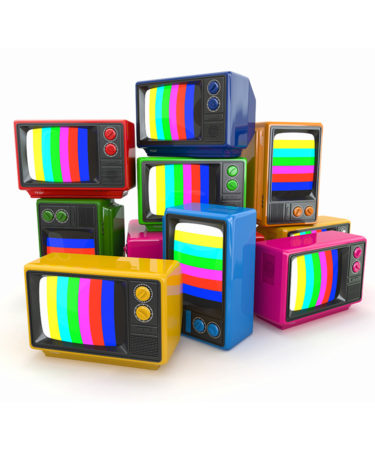Picture this: It’s a weeknight evening after a long day at work. You come home, order some take-out, and fall back onto the couch for some late-night entertainment. The commercial break begins and a Bud Light advertisement appears, followed by a Jim Beam commercial. You think nothing of it — they’re just promotional ads. But one of those two ads was actually banned from television for nearly 50 years.
Unlike wine and beer, liquor ads were banned from television and radio, with the television ban beginning in 1948 and the radio ban starting even earlier, in 1936. Strange as it may sound, these bans were voluntary: Liquor companies self-imposed these bans on their own businesses. Crazy, right? Here’s how it went down:
The first ban went into effect (in 1936), just three years after the United States broke free of its 13- year-long Prohibition. Liquor companies were finally getting back on their feet. At the same time, the number of households that owned radios and televisions was constantly growing, and companies were anxious to take advantage of these resources to advertise their wares. But producers of liquor were afraid that Prohibition could return. Anxious to keep the U.S. from another dry spell, liquor producers gathered together to agree on industry practices and concluded that keeping their products off the air would actually help them more in the long run.
Beer and wine producers, however, did not reach the same sentiment, believing that their products would still benefit from advertising and continued to utilize the ad resources at hand. Over the next 45 years, beer and wine companies continued to take advantage of media outlets for product promotion. The impact on liquor companies was substantial; consumers began to believe that drinking liquor was much worse than consuming beer or wine. By the 1990s, liquor companies knew that something had to change. Seagram was the first company to try to get rid of the ban, and the first step was educating consumers to the fact that a serving of liquor is substantially less than that of beer or wine — a mere one to 1.5 ounces. As Arthur Shapiro documents in his newly released book “Inside the Bottle: People, Brands, and Stories,” liquor producers also understood that national broadcasting would be a big jump after a ban of almost five decades, so focusing on smaller audiences in target consumer cities would be ideal.
The first product Seagram chose to break its television advertising ban was Crown Royal, airing the commercial on a local television station in Corpus Christi, Texas, a strong target audience for the Canadian whisky. The official debut of the television ad was in 1996, 48 years after the ban was put in place. Ads for Chivas Regal, Captain Morgan and Glenlivet followed shortly after.
Predictably, there was a backlash. Many anti-alcohol groups protested the end of the ban, claiming the commercials were dangerous for the nation’s younger population. Campaigns such as the “Just Say No” act took effect; even President Clinton spoke of reinstating the ban on liquor advertisements. But far from hurting sales, the publicity actually ended up benefiting Seagram, resulting in the kind of double-digit sales it had never seen before. Other liquor companies began airing media campaigns, making liquor ads a common sight during late-night television.
So next time you’re in front of your television and see a celebrity-driven alcohol commercial or a sensual robot promoting some international vodka brand, realize that this wasn’t always the norm, and pour yourself a glass to celebrate — though no more than 1.5 ounces, of course.
